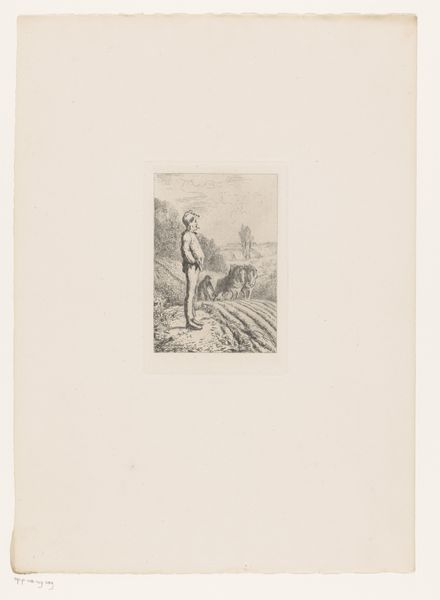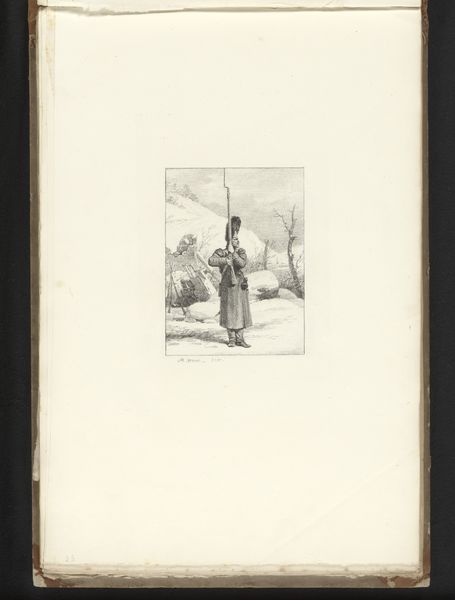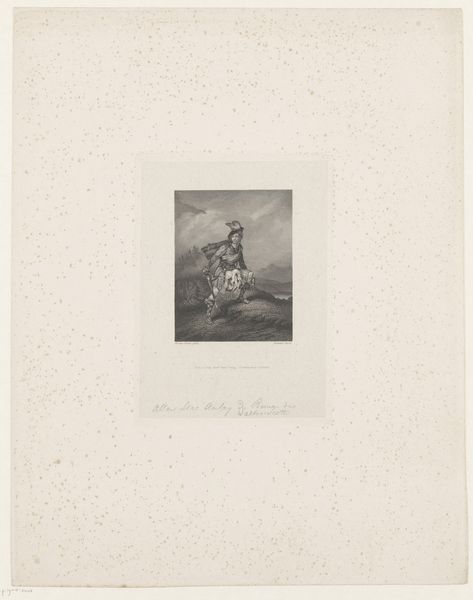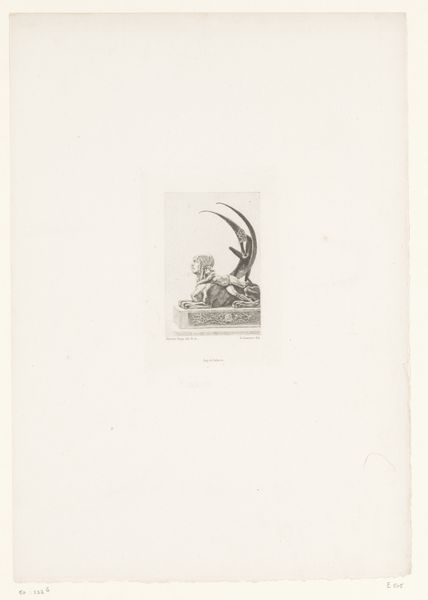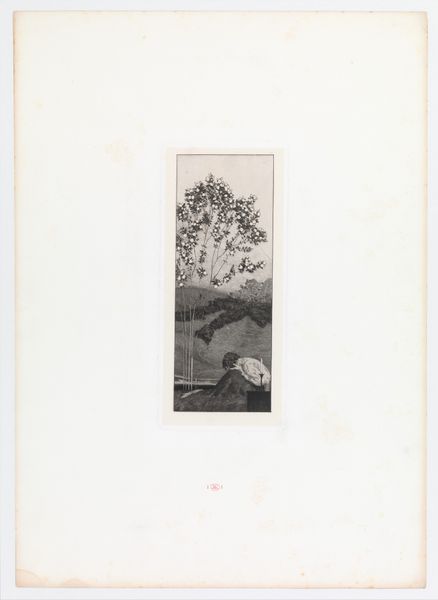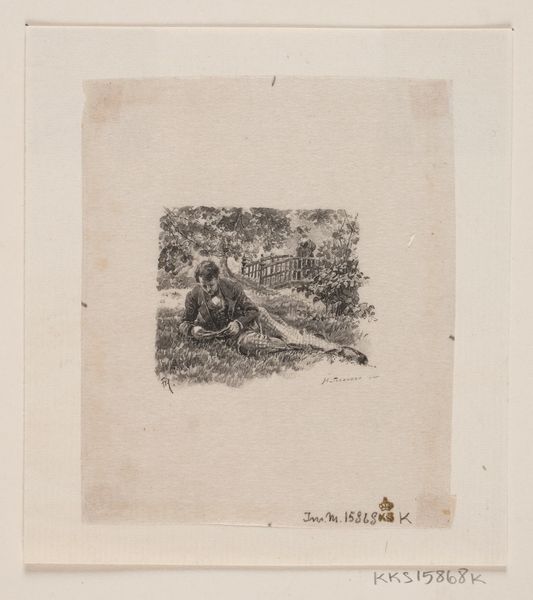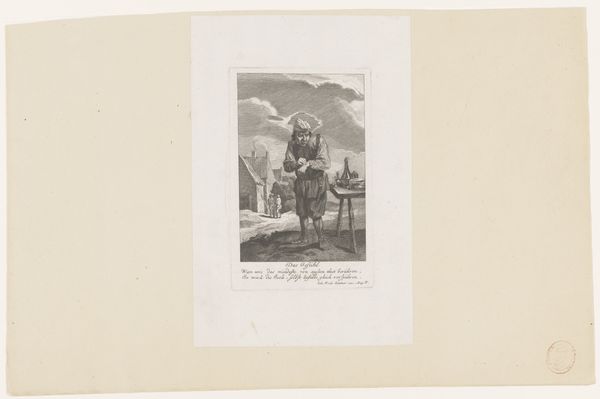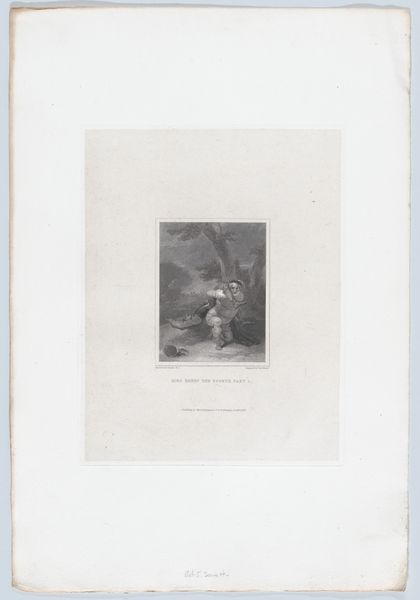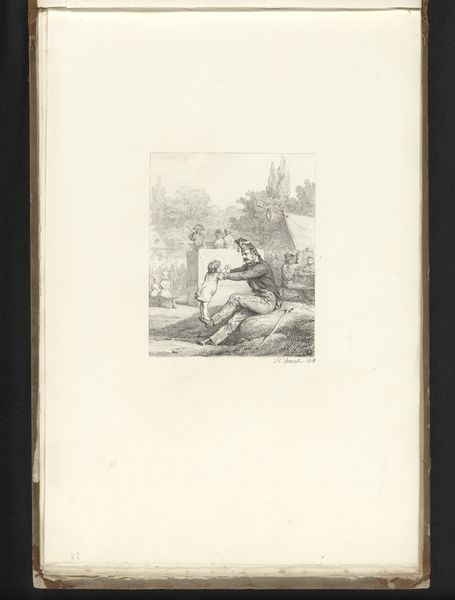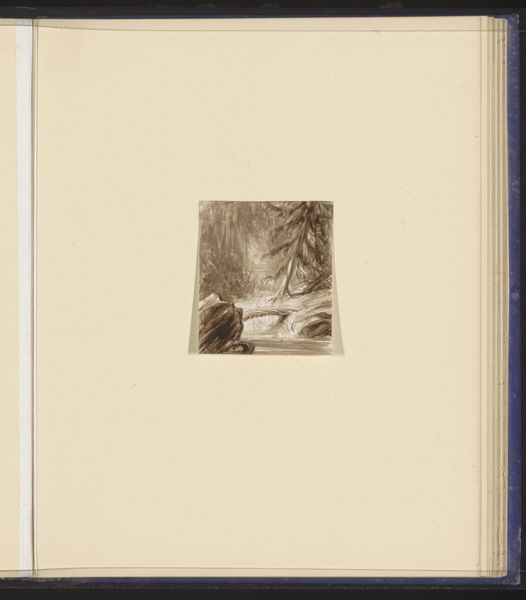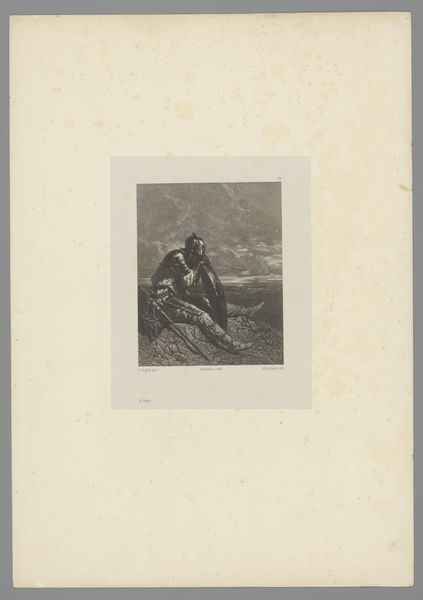
print, engraving
#
animal
# print
#
old engraving style
#
landscape
#
engraving
#
realism
Dimensions: height 425 mm, width 352 mm
Copyright: Rijks Museum: Open Domain
Curator: I’m drawn to the delicate quality of this print. It is an engraving by Edouard Vermorcken titled "Steenbok," dating roughly between 1830 and 1906. Editor: Yes, a very restrained composition. Almost austere, but also rather elegant with the decorative border. What is a Steenbok, exactly? Curator: It's Afrikaans for "stone buck" or, more generally, any of a few small antelopes known for their agility in rocky terrain. Notice the animal's powerful stance atop the rock. The animal evokes strength, resilience and an untamed spirit, perhaps representing the human capacity to overcome challenges. Editor: That pose definitely strikes me as symbolic. Beyond the immediate image, I’m curious about the materials themselves. Look at the textures Vermorcken was able to achieve with simple etched lines. The paper’s smooth surface contrasts beautifully with the intricate detail of the engraving. Was the animal depicted from direct observation or, more likely, copied from a drawing or another print? How readily available would such images have been at the time this print was created? The question of reproducibility is critical. Curator: I find your questions intriguing. And your point on reproduction. It's quite possible this print circulated widely, carrying its symbolic weight to various audiences and contexts. Perhaps, it decorated scientific publications? Or aimed at nature-enthusiast audiences? Editor: Perhaps a study print? Did the artist have a personal connection with nature or was this commissioned by an institution for circulation? The labor and craft behind creating the engraving itself is a valuable artifact that reflects specific historical techniques, access, and consumer interests. It represents knowledge in the making. Curator: Interesting that the piece seems to exist in that space between artistic expression and documentation. Editor: Right! Its function in both disseminating naturalistic knowledge *and* engaging the viewer in an aesthetic experience reveals a lot about art's purpose and potential for broad dissemination. Curator: Indeed. Seeing how you dissect its physical properties and social purpose makes me see it with renewed curiosity. Editor: The materials and their availability shape not only the form but also the content and circulation of ideas within society, reminding us how closely connected these seemingly disparate areas are.
Comments
No comments
Be the first to comment and join the conversation on the ultimate creative platform.

